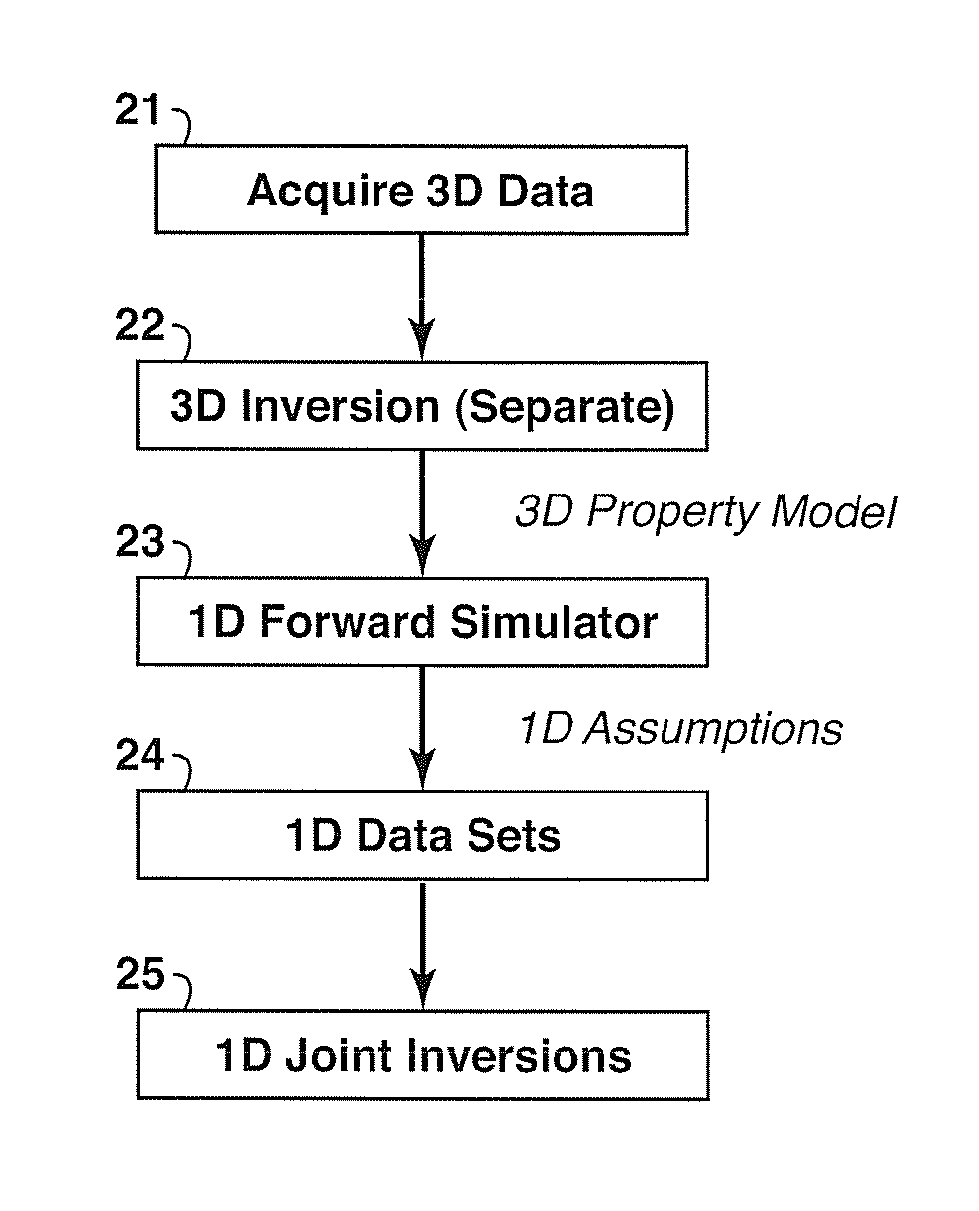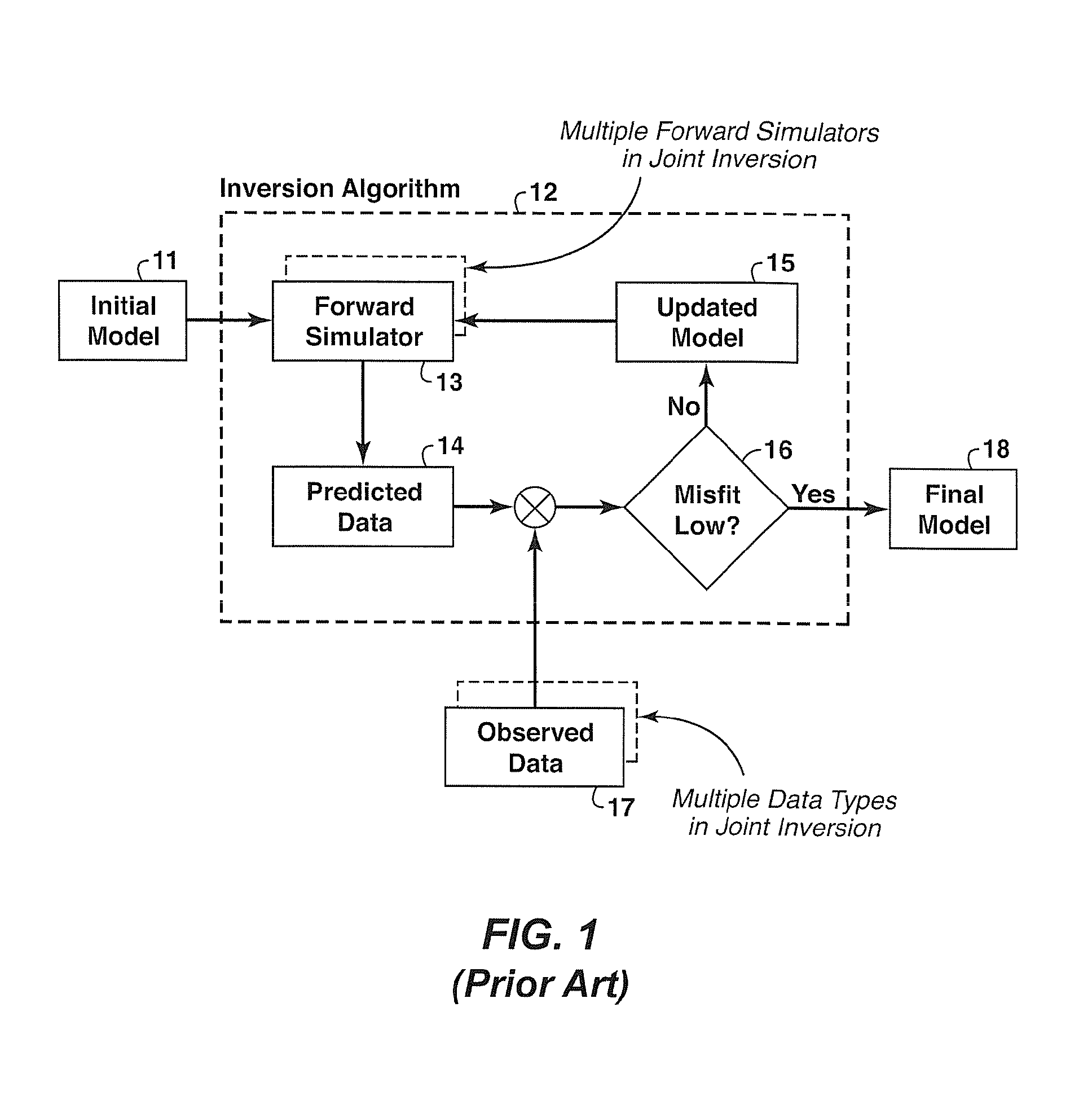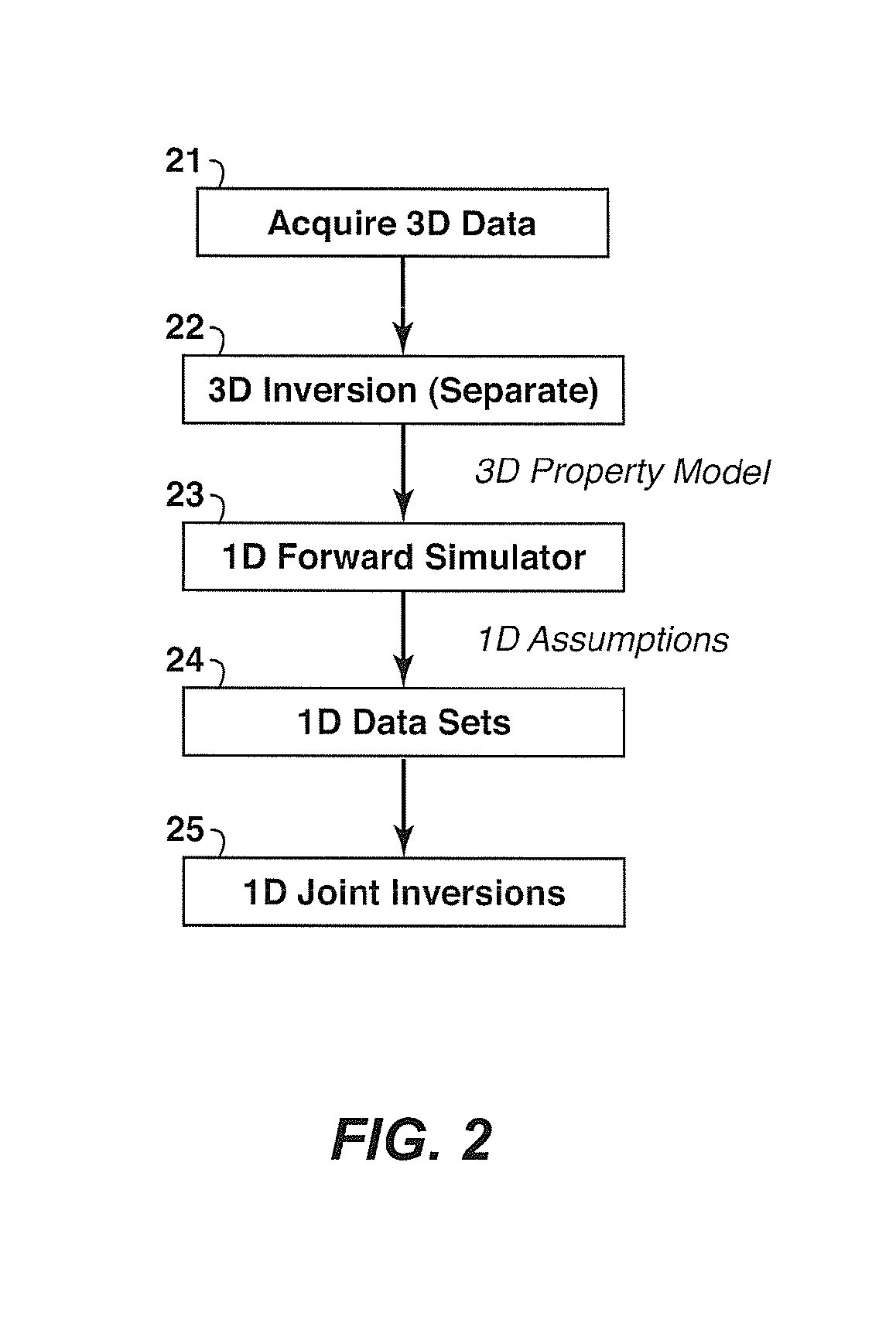Reducing the dimensionality of the joint inversion problem
- Summary
- Abstract
- Description
- Claims
- Application Information
AI Technical Summary
Benefits of technology
Problems solved by technology
Method used
Image
Examples
Embodiment Construction
[0017]Joint inversion methods such as those described above put severe restrictions on the choice of the inversion algorithm—especially for 3D data, that is for observed data which are sensitive to the three-dimensional variation of geophysical parameters within the earth. One of the biggest computational bottlenecks is the forward simulator (13 in FIG. 1), which is used to predict the data as a function of model parameters. For a real data application, the discretized model that is passed to the forward simulator may represent on the order of 100,000 unknowns, or even more, depending on the complexity of the data. Furthermore, for typical model sizes, a single simulation involving the solution of a 3D wave equation required for predicting seismic data can require several hours or even days on a cluster of multiple CPUs. For an inversion algorithm, such a forward simulation may need to be invoked several hundred times until an acceptable inversion result is obtained. For a joint inv...
PUM
 Login to View More
Login to View More Abstract
Description
Claims
Application Information
 Login to View More
Login to View More - R&D Engineer
- R&D Manager
- IP Professional
- Industry Leading Data Capabilities
- Powerful AI technology
- Patent DNA Extraction
Browse by: Latest US Patents, China's latest patents, Technical Efficacy Thesaurus, Application Domain, Technology Topic, Popular Technical Reports.
© 2024 PatSnap. All rights reserved.Legal|Privacy policy|Modern Slavery Act Transparency Statement|Sitemap|About US| Contact US: help@patsnap.com










